This piece summarizes the Aspen Institute Economic Opportunities Program’s event “Unstable Schedules: Unwrapping the Challenges and Solutions for Service Workers,” during which panelists discussed the importance of stable scheduling practices for job quality.
For more than two decades, the Vermont Employee Ownership Center (VEOC) has worked to raise awareness and grow employee ownership in the state, including by providing technical and financial assistance to firms looking to transfer ownership to their workers. Vermont is home to several notable employee-owned companies, like Gardener’s Supply Company and King Arthur Flour, boasting one of the highest rates of employee ownership in the country, and the benefits of this shared prosperity are measurable. The state’s 55 employee-owned companies tend to have higher employee retention rates and narrower pay gaps between leadership and workers when compared to conventionally owned companies. And Vermont’s employee-owned companies report that employee ownership has improved their resiliency. The history of employee ownership in Vermont and the work of VEOC provide useful guidance and insight to those seeking to grow employee ownership and develop new state centers.
This piece reflects on the Aspen Institute Economic Opportunities Program’s event “ESOPs, Job Quality, and Wealth Inequality: The Potential of Employee Stock Ownership Plans,” which discusses the potential for ESOPs to improve job quality and build meaningful wealth for workers.
This article discusses EOP’s research and lessons learned on how philanthropy, employers, practitioners and policymakers can support good jobs for young adults.
In this interview, Chris Fredericks, founder and CEO of the employee owned company Empowered Ventures, reflects on methods to grow employee ownership and the benefits of employee ownership for a company and its workers.
State centers of employee ownership work to promote employee ownership and educate business owners and workers about the different avenues of employee ownership available. In this brief, the Aspen Institute Economic Program discusses the strategies and practices implemented by Colorado’s Employee Ownership Office to better understand how employee ownership can be supported and grown at the state level. This profile is a useful resource to inform other state centers’ practices and the government’s role in supporting state centers, particularly as more centers emerge through funding provided by the recently passed Worker Ownership, Readiness, and Knowledge (WORK) Act.
This piece reflects on the Aspen Institute Economic Opportunities Program’s event “Economics Reimagined: A Discussion on Building a Human Rights Economy,” which discussed how to build an economic system that values and centers the well being of people.
Apprenticeships and structured work-and-learn programs, once focused primarily on younger people in particular careers, are valid options for adults and those with adult responsibilities who want or need to work while gaining their education. A new generation of these models is emerging, focusing more deeply on expanding talent pipelines, creating pathways into different industries, and offering the benefits of apprenticeship and work-and-learn models to populations that have previously been marginalized from both work and learning. This brief describes several company-led models, reaching new populations and creating meaningful opportunities for both learning workers and businesses to succeed.
Aon’s apprenticeship program has drawn widespread attention for a reason. It works. Since its inception in the US in 2017, the firm has supported nearly 300 apprentices. Within the Chicagoland cohorts, Aon reports an apprenticeship completion rate of more than 80%. Successful completion requires that students meet performance standards for both work-based learning and academic program requirements. The program is intentionally inclusive, supporting apprentices of color, women, and first-generation students as they move into good jobs. Students graduate from their programs debt-free, as Aon covers all costs of attendance at partner colleges. Aon also pays salary and benefits for apprentices, with starting salaries of $42,000-46,000 depending on location. Upon completion of the program, apprentice graduates are offered full-time employment and work in many departments, including insurance, IT, and human resources, and enter those roles as experienced, valued colleagues who earn competitive wages with exceptional benefits packages.
This brief, featuring McDonald’s Archways to Opportunity, Amazon’s Career Choice, and UPS Metropolitan College programs, describes this rare but exciting program design aspect, wherein large employers work to develop talent for opportunities beyond the business.
